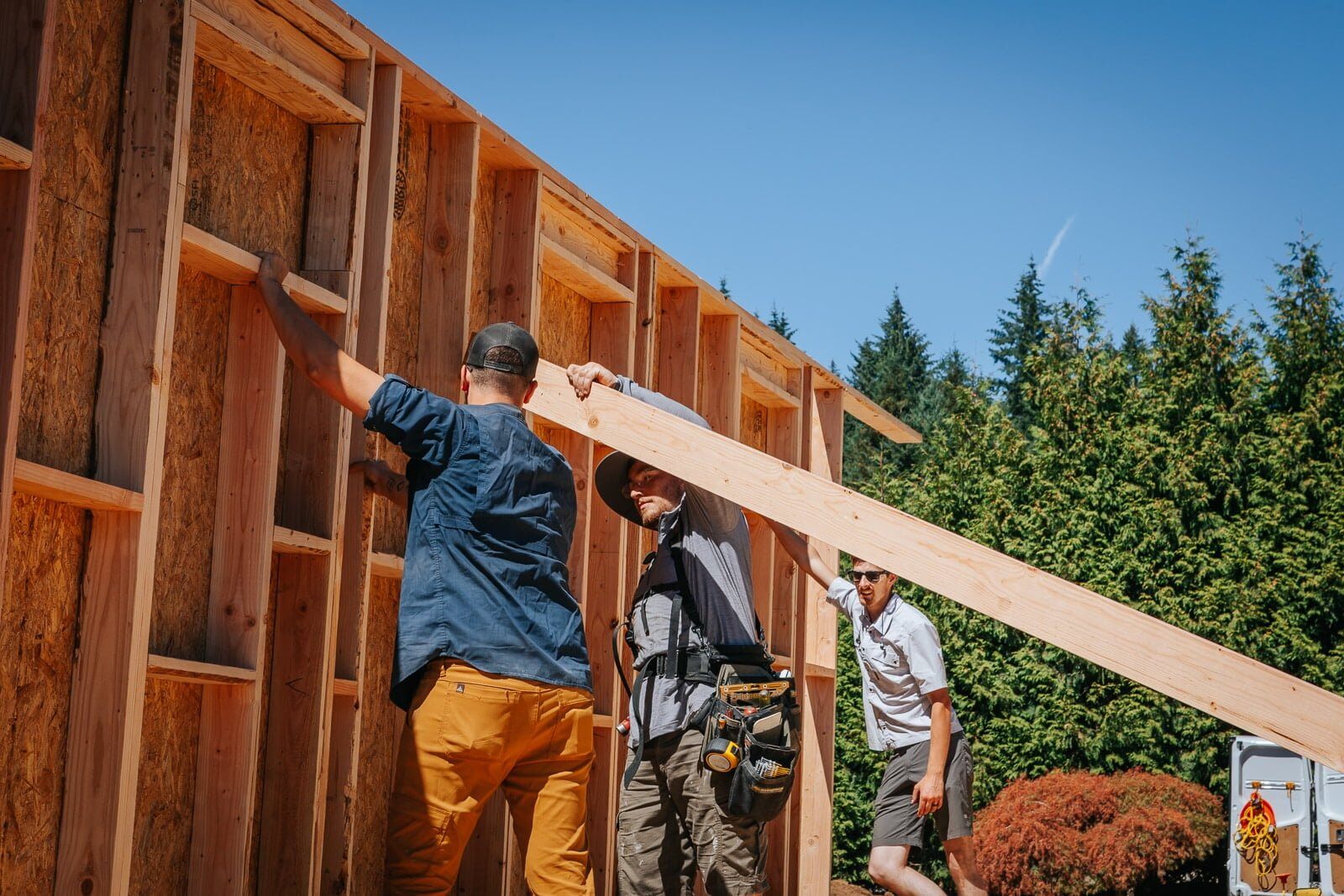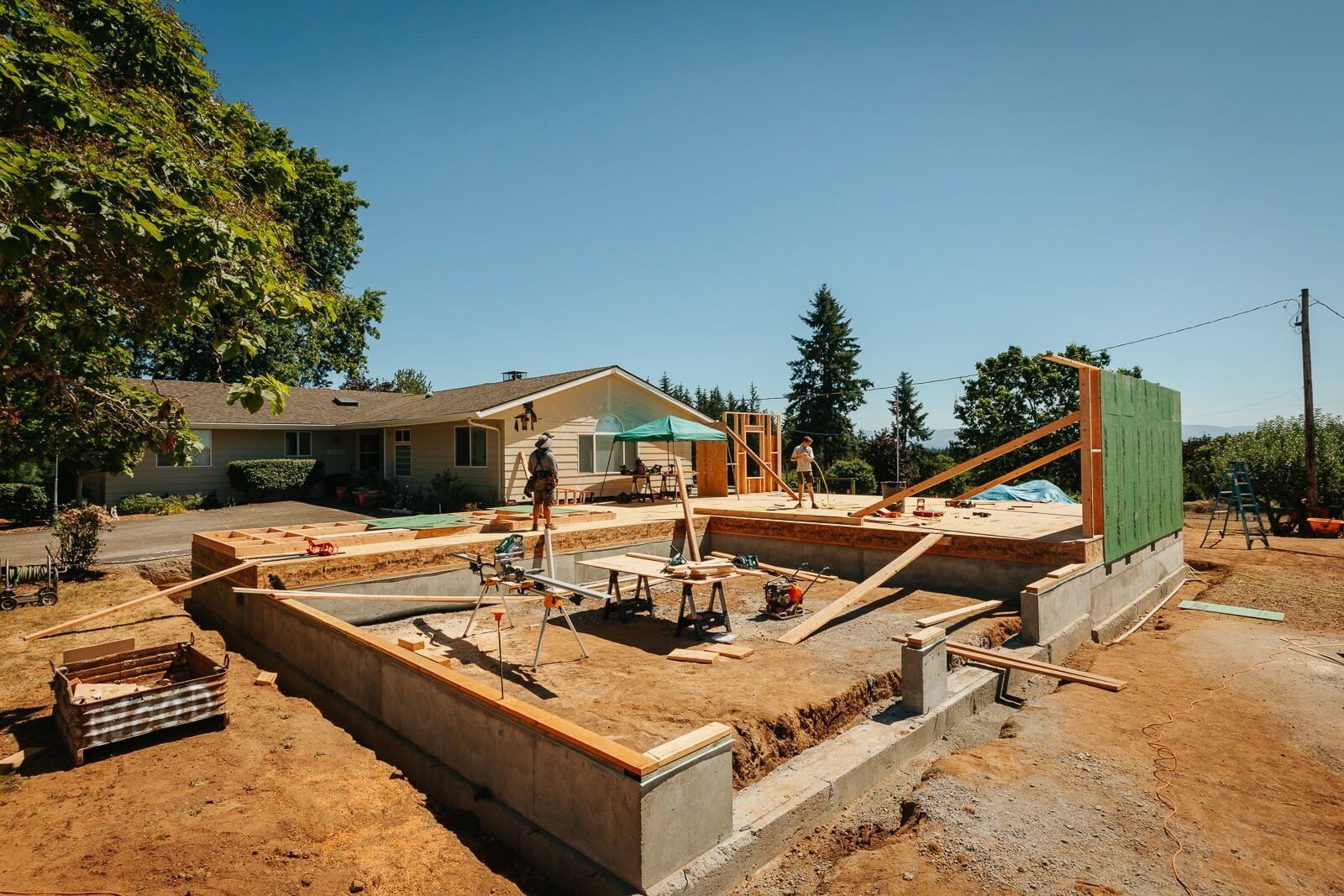Building a new structure, whether it’s a detached garage, an addition to your home, or even a new dwelling, presents some challenging choices. For many homeowners, these decisions are often swayed by initial cost comparisons. At a glance, $50,000 for a prefabricated kit seems like a steal compared to spending hundreds of thousands for a custom build. Yet, the reality of choosing between these two paths comes with complexities and consequences that go far beyond the sticker price.
At Lamont Bros., we’re familiar with the many differences that distinguish a kit build from a custom project. Our team has seen how both options carry their own set of benefits and limitations, shaped by the homeowner’s aspirations, budget, and long-term satisfaction. For some, a kit adequately satisfies their needs at a more affordable price. For others, a custom build may be a better fit for the project’s goals.
In this article, we’ll dive into what sets a kit and a custom build apart. From the basic structure and material quality of kit builds to the personalized design and craftsmanship of custom projects, we aim to provide you with a comprehensive comparison. This knowledge will equip you with the insights needed to decide which option best suits your needs. Specifically, we’ll discuss:
What is a Kit Build?
A kit build offers a practical and budget-friendly solution for homeowners looking to expand their living space without embarking on a full-scale construction project.
External structures including sheds, pole barns, detached garages, and accessory dwelling units are commonly offered as kits. There are also a few kits that can function as home additions, attaching to the structure of the main home. These prefabricated packages come with everything needed to assemble a structure, offering a fast and efficient building process.
Kit builds are characterized by their prefabricated nature, designed to be assembled quickly and with minimal labor. These kits are often produced en masse, allowing for reduced material costs and a shorter timeframe from purchase to completion.

Prefabricated Options and Materials
The materials included in a kit are standardized, focusing on cost-efficiency and ease of assembly. While this means that a kit can be put together relatively quickly, it also limits the options available to the homeowner, both in terms of material selection and design features.
Common Features and Add-ons
Although customization options are limited, kit builds may offer different finish packages, such as different door styles, window placements, and occasionally, exterior finishes. These allow for a degree of personalization within the confines of the prefabricated structure.
Some kits may feature add-ons at an additional cost. These upgrades might include extra living space or higher quality features such as premium trim materials or high-end appliances and fixtures.
Benefits of Kit Builds
Kit builds stand out for their affordability and speed, making them an attractive option for many homeowners.
Lower Initial Cost
The most compelling advantage of a kit build is its cost. With all components produced and packaged together, kits offer a way to add to your home without the higher price tag of custom design and construction.
Speed of Construction
Thanks to the pre-engineered components, kit builds can be assembled much faster than traditional construction projects. This means less disruption to your daily life and quicker access to your new space.

Limitations and Hidden Costs
While the upfront cost and speed of construction are appealing, there are important limitations and potential hidden costs to consider.
Exclusions (Foundation, Electrical, Plumbing)
Kit builds often exclude certain elements of the project that you will need to play for. This may include things like the foundation, plumbing, and electrical utilities, all of which can significantly increase the overall cost and complexity of the project.

Quality and Customization Concerns
The use of standardized materials and designs may only meet some homeowners’ quality expectations. Keep in mind that because a kit is designed to appeal to as many people as possible, it won’t be perfectly matched to your needs. It’s more of a “one-size-fits-most” approach.
What is a Custom Build?
In contrast with the affordability and standardization of prefabricated kits, custom builds offer a path to truly personalized home expansion. With a custom build, you pay higher for a product that reflects your unique tastes and requirements.
Unlike kit products, a custom-built structure must undergo a full design process before beginning construction. Then, all the materials must be individually sourced before construction can begin.
Whereas many kits are targeted toward utility spaces such as shops, sheds, or garages, custom builds are much more common for living spaces and areas where homeowners expect to spend a lot of time.

Tailored Design and Construction
Custom builds are defined by their bespoke approach. They offer homeowners the freedom to design their projects down to the finest detail. Planning for this type of project typically involves working with design professionals to identify the goals you have for the project and translating those goals into a custom structure that solves them.
Personalization and Specifications
The custom building process allows for complete control over every aspect of the design, from the general layout to specific finishes and materials. This approach ensures that the finished structure perfectly aligns with the homeowner’s vision and meets the needs of their lifestyle.
Advantages of Custom Builds
A custom-built structure or addition to your home can greatly enhance your quality of life and property value.
Material Quality and Labor
A custom-built project by a reputable contractor will almost always yield an exceptionally high-quality result. They employ superior materials and craftsmanship, ensuring that every component of the project is executed to the highest standard.

Long-term Value and Investment
Investing in a custom build often results in a significant enhancement of the property’s value. These unique and well-constructed projects can attract a premium in the housing market, offering substantial long-term benefits to the homeowner.
Disadvantages of Custom Builds
Before committing to a custom build, there are also a few drawbacks to be aware of.
Higher Initial Cost
The level of customization and quality in a custom build comes at a price. The initial costs associated with custom construction projects are typically higher than those of kit builds. As a result, they are usually a more significant financial commitment.
Longer Timeframe
Custom projects take longer to complete due to their detailed design and construction processes. This extended timeline can be a drawback for homeowners looking for a quick addition to their property.

Deciding Between a Kit and a Custom Build
The decision between a kit or a custom build fundamentally comes down to balancing the initial cost with the long-term value, the construction timeline, and ultimately, the satisfaction with the final product. Each path offers distinct advantages and challenges.
1. Immediate Budget vs. Future Value
Consider your financial landscape. If you’re seeking a solution that minimizes initial costs, kit builds are a great option. They offer the unique advantage of expanding your space without draining your savings, suitable for when immediate needs outweigh all else. However, it’s essential to ponder the future too.
Custom builds, while demanding a higher initial investment, can significantly enhance your property’s value and your quality of life within the space. Think of it as planting a seed that grows over time, enriching your home’s worth and your satisfaction.
2. Timeline: Speed vs. Craftsmanship
Your project’s timeline is another vital consideration. Kit builds shine when speed is of the essence, catering to those who wish to see their new space take shape quickly. This option matches well with tight deadlines or the urgent need for additional room.
On the other hand, if you’re in no rush and value a hands-on approach to crafting your ideal space, the custom route offers a richer journey. The extended timeframe of custom projects is a canvas for customization and creativity, allowing every detail to be fine-tuned to your precise wishes.
3. Satisfaction: Functionality vs. Personalization
Lastly, reflect on what will bring you the most satisfaction. If fulfilling an immediate functional need is your priority, and you’re content with the efficient, “one-size-fits-most” approach of kit builds, then this could be the path for you. It offers a straightforward solution that addresses space requirements with minimal fuss.
However, if you’re dreaming of a space that’s a true extension of your personality and lifestyle, custom builds invite you into a world of endless possibilities. This choice is about more than just adding square footage; it’s about creating a personalized environment that resonates with your essence and evolves with your life.
Want to Learn More About Your Custom Construction Options?
After reading about the differences between a kit and a custom build, do you have a better idea of which one is best for your needs? If so, continue your research by downloading our free Home Addition Buyer’s Guide. In it, you’ll find helpful insights and industry advice on how to expand your home from leading professionals in the remodeling industry.
Want to speak directly with a designer about your ideas for a custom-build project? If so, click the button below to schedule a free design consultation with a member of our team. Let us help you begin the process of turning your current home into your dream home.



